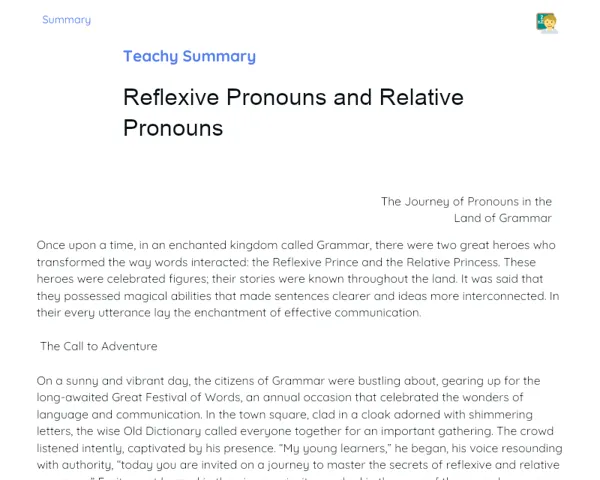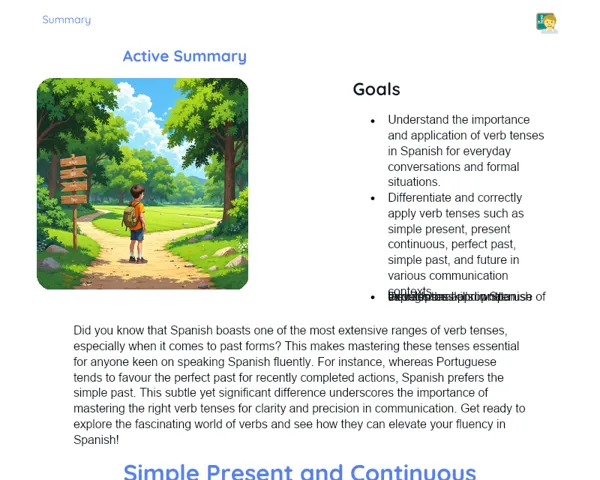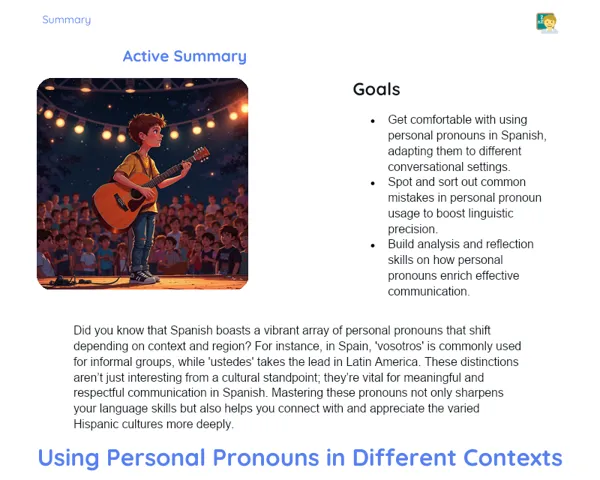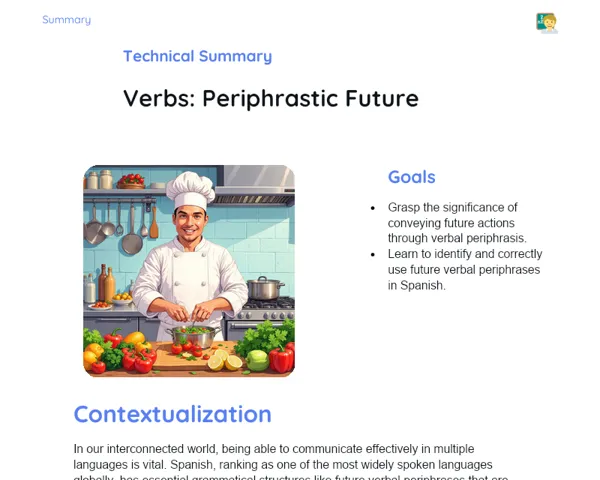Goals
1. Identify verbs in the imperfect past and past perfect tenses.
2. Distinguish between the uses of the imperfect past and past perfect tenses and relate them to other verbal tenses.
3. Compose accurate sentences using the imperfect past and past perfect tenses.
Contextualization
Picture yourself sharing a story about your recent holiday or recounting how something unfolded in the past. To do this effectively in Spanish, it's crucial to select the proper verb tenses. The imperfect past conveys habitual or ongoing actions, like 'When I was a child, I used to play in the park every day.' In contrast, the past perfect tense signifies that one action occurred before another in the past, such as 'I had completed my homework before my friends arrived.' Mastering these verb tenses is key to narrating past events, clarifying contexts, and detailing situations, ensuring your stories are both vivid and comprehensible for your audience.
Subject Relevance
To Remember!
Imperfect Past
The imperfect past is a tense that describes habitual or ongoing actions from the past. This tense is frequently employed in storytelling to create an illustrative depiction of past scenarios or activities that were recurrent.
-
Expresses habitual or repetitive actions from the past, like 'When I was a child, I played in the park every day.'
-
Provides background or context in past situations, e.g., 'The house was spacious and had a lovely garden.'
-
Indicates actions happening at a specific moment in the past, such as 'I was reading a book when it started to rain.'
Past Perfect
The past perfect tense signifies that a certain action took place prior to another action in the past. This tense is vital for establishing a clear chronological order of previous events in a narrative.
-
Describes an action that was completed before another action in the past, like 'I had finished my homework before my friends arrived.'
-
Clarifies the sequence of events within a narrative, e.g., 'She had already left when I called.'
-
Commonly used alongside other verb tenses to create a more intricate temporal structure in stories.
Difference Between Imperfect Past and Past Perfect
While both tenses relate to past actions, they serve distinct purposes. The imperfect past is concerned with describing habitual or ongoing actions, whereas the past perfect indicates actions that took place prior to other past actions.
-
The imperfect past highlights habitual actions without emphasizing exact timing, while the past perfect delineates a clear order of events.
-
The imperfect past is descriptive, while the past perfect is more narrative and sequential.
-
Examples: 'I used to play in the park every day' (imperfect past) contrasted with 'I had played in the park before dinner' (past perfect).
Practical Applications
-
In a Spanish job interview, correctly using the imperfect past and past perfect can effectively communicate your experiences and make a strong impression.
-
In the tourism industry, tour guides adept at these verb tenses can narrate past stories and events more engagingly for tourists.
-
In international trade, being clear about past events can help avoid misunderstandings and enhance negotiating effectiveness.
Key Terms
-
Imperfect Past: A verb tense used for habitual or ongoing actions in the past.
-
Past Perfect: A verb tense indicating an action that occurred before another action in the past.
-
Narrative: The skill of storytelling or reporting events, where the accurate use of verb tenses is crucial for clarity.
Questions for Reflections
-
How does effectively using the imperfect past and past perfect enhance the clarity of your narratives in Spanish?
-
In which everyday situations or workplaces would knowledge of these verb tenses be especially beneficial?
-
Have you encountered a situation where using the correct or incorrect verb tense affected understanding? How could it have been improved?
Practical Application Challenge: Travel Diary
Write a fictional travel diary using the imperfect past and past perfect tenses to narrate your experiences and past events.
Instructions
-
Draft a one-page text detailing a fictional trip.
-
Employ the imperfect past to describe habitual or ongoing actions during your trip, e.g., 'Every morning, I would have breakfast at the hotel café.'
-
Apply the past perfect to recount events that occurred before others during your journey, such as 'I had visited the museum before going to the park.'
-
Ensure your travel diary follows a clear sequence of events and contains detailed descriptions.
-
Review your text for accurate use of verb tenses.



